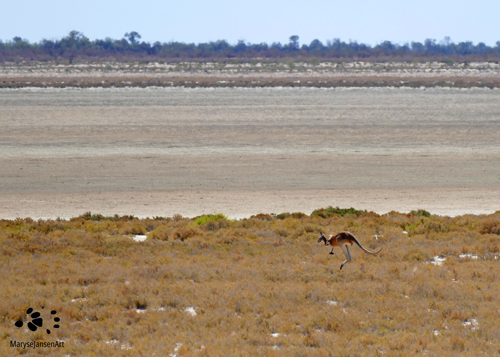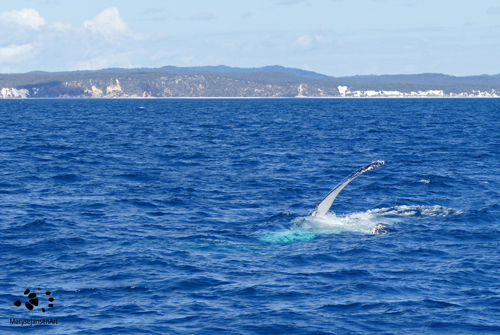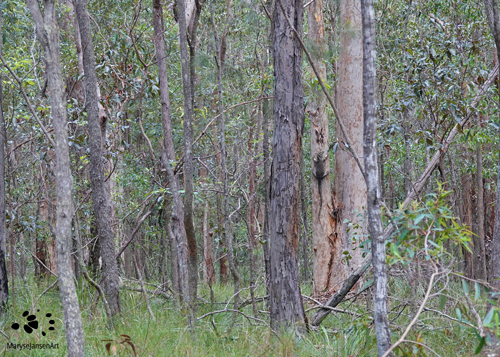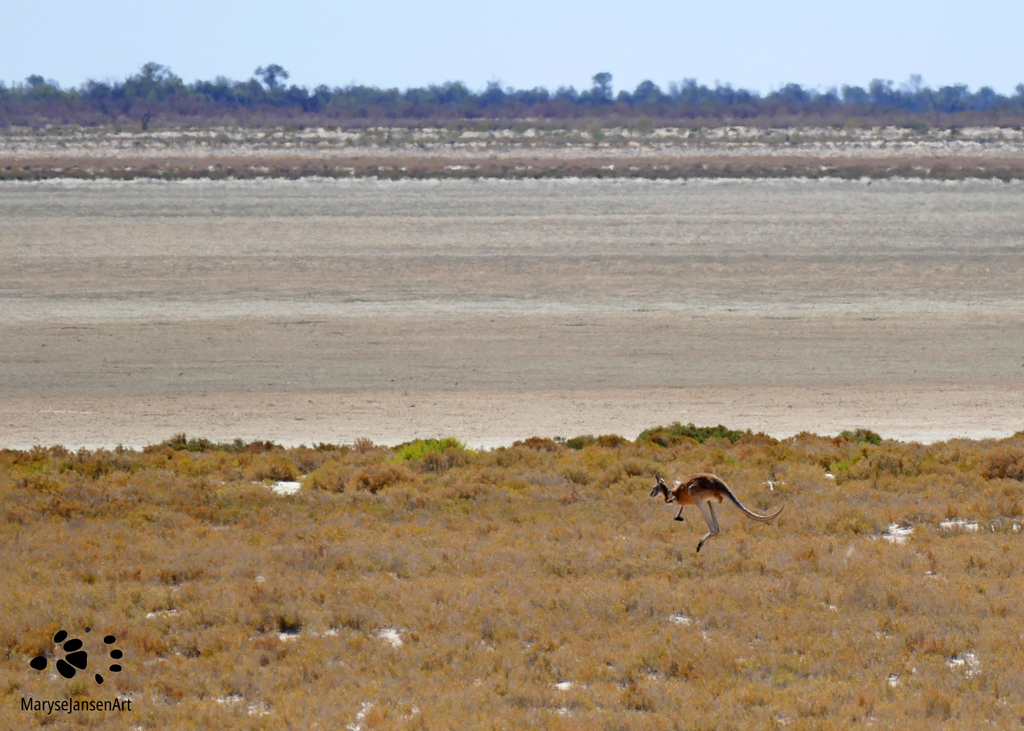Wildlife in Landscape Photography with marysejansenart
Adding context and a story to your photos

Table of Contents
A story of drought
The land is dry … bone dry. I’m travelling through the outback in south-west Queensland where it has barely rained a drop in the last decade. Even the permanent lakes are no longer. I can walk on the cracked mud and every now and then I spot the skeleton of a fish. The area around what used to be a lake is littered with the bodies of dead Eastern Grey Kangaroos. It is a sad sight…. In the distance I detect some movement: a big Red Kangaroo travels past, in search of water. I take some photos of the impressive animal in this landscape!
The Red Kangaroo
The Red Kangaroo, also referred to as ‘Big Red’, is the largest living marsupial and also the largest terrestrial mammal in Australia! They can reach up to 2.8m in body length, including the tail. They are widespread in Australia’s interior: arid and semi-arid zones. The rufus coloured males are very large, heavy animals with powerful hind legs. In one leap they can cover up to 9m distance at a height of up to 3m!!!! This is why you will never find a male in a zoo, only females, which are about half the size of a male and actually mostly grey in colour.
Red Kangaroos are well adjusted to live in hot and dry conditions and are able to survive when water is scarce. Their kidneys are able to concentrate urine efficiently. They obtain their fluids and nutrition from the vegetation they eat, which includes grasses, herbs and leaves of shrubs. However, when drought is persistent, their food sources become scarce as well and they will suffer.
Their insulating fur protects them from the heat and when temperatures are high they tend to stay in the shade. They have a number of techniques that help them keep cool such as panting and sweating. They also lick their forelimbs, as the superficial veins on there can help them cool.
Photographing animals in the landscape
In the featured photo you can see the animal, but also a great deal of its surroundings. Taking photos of animals in the landscape, as opposed to close up, can add a lot of value to the story of the image. In this case the story of the drought is made visible when we see the powerful kangaroo travelling through this brown, dry landscape, the dried up lake behind it and the background shimmering in the heat. We can easily imagine how hard it must be to survive in these conditions.
Let’s have a look at another image of an animal in the landscape: a Humpback Whale! An amazing animal to which I will definitely dedicate a blog post some time in the future, but for now I will give you a short description.
The Humpback Whale
The Humpback Whale is a large baleen whale that can grow up to 18m! These whales migrate every year up and down the east and west coasts of Australia. During summer, they spend their time in the Antarctic to feed on krill. In winter they move up the coast to warmer waters to breed. They are easily recognized by distinctive knobbly protuberances on the head and long flippers, the dark coloured upper parts and the white throat, belly and underside of their flippers.
To be able to see this magnificent animal I am joining a small group on a whale watching cruise in Hervey Bay, Queensland. This is one of these whales’ favourite spots to hang out during the breeding season. Humpback Whales are a curious species and will often approach boats. They are quite playful and can be seen tail slapping, waving their flippers, spy hopping and breaching! It is an amazing experience to watch them!

One of these giants of the sea is waving its greetings, showing off its white belly. The image shows the whale in its environment, which is obviously the water, but the strip of land in the background enhances the perspective. It gives us a frame of reference to help us understand the enormous size of this creature and at the same time we might sense that compared to the wide open ocean that is their playground they might still seem quite small.
At the same time this image tells the story of an amazing experience of an encounter with this whale. A playful interaction where it appears that whale and human beings are greeting each other by waving their forelimbs. Doesn’t it make a perfect postcard image?
Wildlife Spotting – A Lace Monitor in the Forest Landscape
I’m on a bush walk now, through a Eucalyptus forest. I walk slowly and pause regularly to follow a sign of movement or a sound which lead me to interesting sightings. I spot interesting insects, birds and wildflowers. Also I simply enjoy the landscape of this beautiful forest. Scanning through the trees, I notice something. A dark shape on one of the tree trunks. It stands out because the tree trunk of the Scribbly Gum is quite lightly coloured. The dark shape belongs to a Lace Monitor!

In a recent blog post which I dedicated to this animal, we’ve had a good close up look at it. But now I can show you how this animal fits in its environment. It can sit so still, it is easy to miss despite its size. Usually they sit on a darker trunk in which case they are so well camouflaged, I probably would not have seen it from this distance!
This image tells us something about the life of this big lizard, how it spends time in the trees resting, gathering energy for the next hunt. It also tells us about the experience of wildlife spotting, which isn’t always as easy as the zoom lenses might make us believe. On the other hand you can imagine how exciting it is to discover the animal as you are scanning your surroundings. Check out this experience during the latest episode from ‘Come for a walk in the Australian Bush’ by watching it below:
If you are interested in purchasing the featured image ‘Big Red Roo’ or would like to see what the image looks like on the various products, please head to my shop. If you prefer ‘Greetings from a Humpback Whale’, click shop here and for ‘Lace Monitor in the Forest Landscape, click here.


